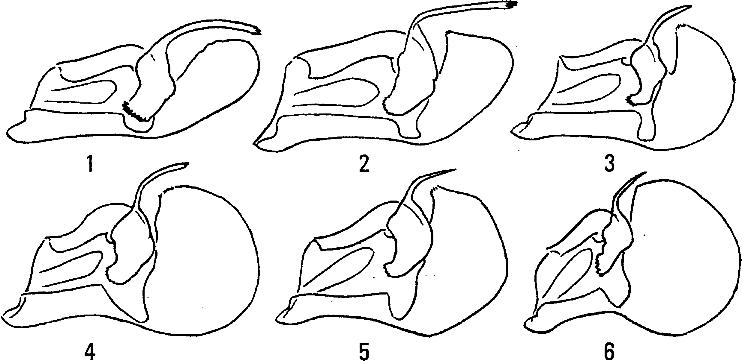LEPIDOPTERA
H E S P E R I I D A E Latreille, 1809
PYRGUS Hubner, [1819]
Pyrgus serratulae (Rambur, [1839])
Pyrgus serratulae (Rambur, [1839])
![Pyrgus serratulae (Rambur, [1839])](../image2/hesperid/hes-p-se.jpg)
• TYPE LOCALITY. Andalusia [Spain].
• RANGE. From S. Europe across Asia Minor to Iran and Lebanon, and across S. Siberia to Mongolia and NE. China.
• DISTRIBUTION AND VARIATION. The central and S. European parts, the whole Caucasus (including Transcaucasia), S. Siberia from the Altai to the Ussuri region. A highly variable species with respect to size and white spotting pattern. The nominate subspecies seems to be distributed in the European part as well as in Siberia. The other known subspecies are: ssp. grisescens Albert!, 1970 (high mountains of the Caucasus); ssp. major Staudinger, 1879 (Transcaucasia); ssp. uralensis Warren, 1926 (the SE. European part, the S. Urals, Kazakhstan). The status of the very recently but poorly described ssp. shukshini Korshunov et Ivonin, 1996 (the Altai and Sayan Mts. as well as Tuva), requires clarification.
• TAXONOMIC NOTES. The subspecific composition of this widespread species and the distribution of subspecies need a profound revision.
• HABITATS AND BIOLOGY. Open grassy and flowery places, river valleys, etc., up to 2,600 m a.s.l. Flight period: May-July depending on the altitude and latitude, usually in one generation, but in the extreme south of the range (Iraq), P. serratulae can have two generations. Host plants: Rosaceae (Potentilla pedata, P. arenaria, Alchemilla spp.). Hibernation larval.
• SIMILAR SPECIES. P. alveus: UNH basal and discal spots angled, the latter forming a band. P. armoricanus: UNH ground colour brownish, white spots smaller, angled, usually arranged in a band. P. speyeri: white spots on UPS and UNS reduced, UNH brownish. P. jupei (flying together with P. serratulae grisescens): small, UNH without greyish suffusion.
Photo and text: Guide to the BUTTERFLIES OF RUSSIA and adjacent territories Volume 1. PENSOFT, Sofia - Moscow. 1997

1 - P. serratulae major (Nakhichevan);
2 - P. cinarae (Armenia);
3 - P. armoricanus persicus (Nakhichevan);
4 - P. alveus (Teberda, N. Caucasus);
5 - P. speyeri (S. Ussuri region);
6 - P.jupei (Nakhichevan)